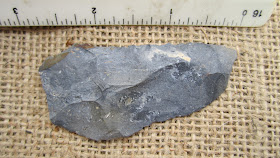I received this notice from the 30 Meter Digital Group of which I am member #3385. This is a good opportunity to just observe or participate in radio contacts using the various digital modes on the 30 meter band. I have some other engagements to attend to this weekend but I will find some time to get on the air at some point and see whats up.
30 Meter Multi Mode Weekend
When: September 25th & 26th
Where: 10 MHz - 30 Meter Band (10.100 – 10.150)
Objective: To promote experimenting and using different digital modes on unique 30 Meter Band.
Those of you who want to participate using the more common modes of CW, BPSK31, RTTY, we welcome that, but those wanting to try other less used modes please do so and turn your RSID on to help others know what mode you are transmitting (common modes no need for RSID, do use RSID on the less common/exotic modes).
A number of digital mode groups will be participating this weekend so if you have wanted to try out a new digital mode or make some contacts using less common digital modes this weekend might be of interest to you. There are a number of multi-mode digital software programs so this is also a chance to get on the 30 Meter Band to try them out. Most of them have RSID/TXID (Reed Solomon Identifier- automatic mode detection and tuning).
This event is NOT a contest…no set times…no rules…no exchanges…no winners other than those that participate with casual use of the 30 Meter Band knowing that others with like interests will be on this weekend to experiment, ragchew, DX and have some fun trying different digital modes!
Where on the 30 Meter Band to find different digital mode activity:
(Note: these are suggested only and observations of known digital mode activity)
10.100 – 10.130 CW
10.1239 WINLINK-Pactor
10.129 EMCOMM
10.132 SSTV-Narrow (MP73-N)
10.134 – 10.138 FeldHELL
10.136 CMSK
10.1345 – 10.138 OLIVIA, MFSK
10.1386 MEPT/WSPR
10.139 JT65 (WSJT)
10.1405 PROPNET (BPSK31)
10.139 - 10.141 WSPR (QSO MODE-WSJT)
10.140 – 10.141 BPSK31 QRP
10.140 – 10.142 BPSK31 - DX Region 1,2,3
(or BPSK/QPSK, 31,63,125 <125hz)
10.142 – 10.145 RTTY, MFSK,THOR, THROB, DOMINO, OLIVIA, CONTESTIA
10.143 – 10.145 ROS (Region 2 –note not legal in USA)
10.144 FeldHELL (Region 1)
10.142 – 10.144 ALE-400hz
10.145 – 10.148 ALE-2khz
10.145 ARRL SkipNet
10.147 – 10.148 PSKMail/APRS
10.1491 – 10.1495 APRS
Operating hints for the weekend:
- Do use RSID (RXID/TXID) for the less common/exotic modes (i.e. Contestia,Olivia,Domino,etc)
- Do CQ with RSID for more than just a few of CQ’s, don’t expect to have someone to reply on a less common used mode the first few CQ’s…give it a while for others to find you and the mode being used
- Do use good operating habits – clean signal, lowest wattage to complete the QSO, QRL in common mode first, if band is busy or crowded spread out or use narrower width modes (i.e. if band is busy don’t use OLIVIA 8/500 in the middle of the 30 Meter PSK 10.141 portion of the Band-not good operating habit if the band is busy and you will not make many friends)
- Do have fun and compare modes, wattage, antennas, etc with other operators that are interested to do the same..most the 30 Meter Digital Operators are not Call,599,73 most want a QSO (even DX)
- Do use the other digital ops with more experience most seasoned digital ops on 30 Meters are very helpful and will have the patience to help if needed…also might use and log on to HamSpots (link below)
Go to the link below for more information:
http://www.30mdg.net/30%20Meter%20Multi%20Mode%20Weekend.pdf
***Please note we are secondary users of the 30 Meter Band and to use good operating procedures
Have fun and hope to see you on the waterfall!
Thanks
Don KB9UMT 30MDG#0001
http://www.30mdg.net/
http://groups.yahoo.com/group/30MDG/


















































